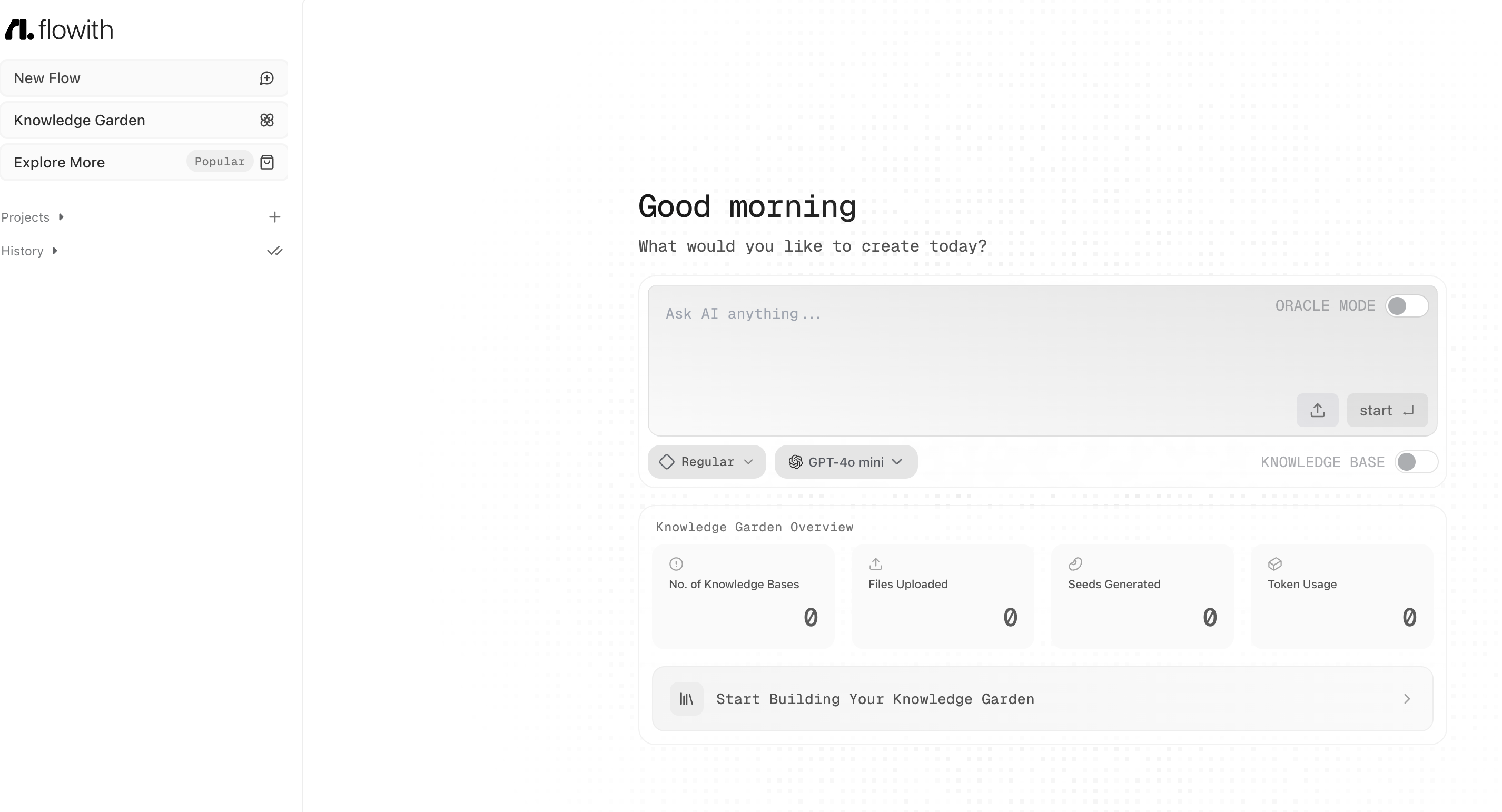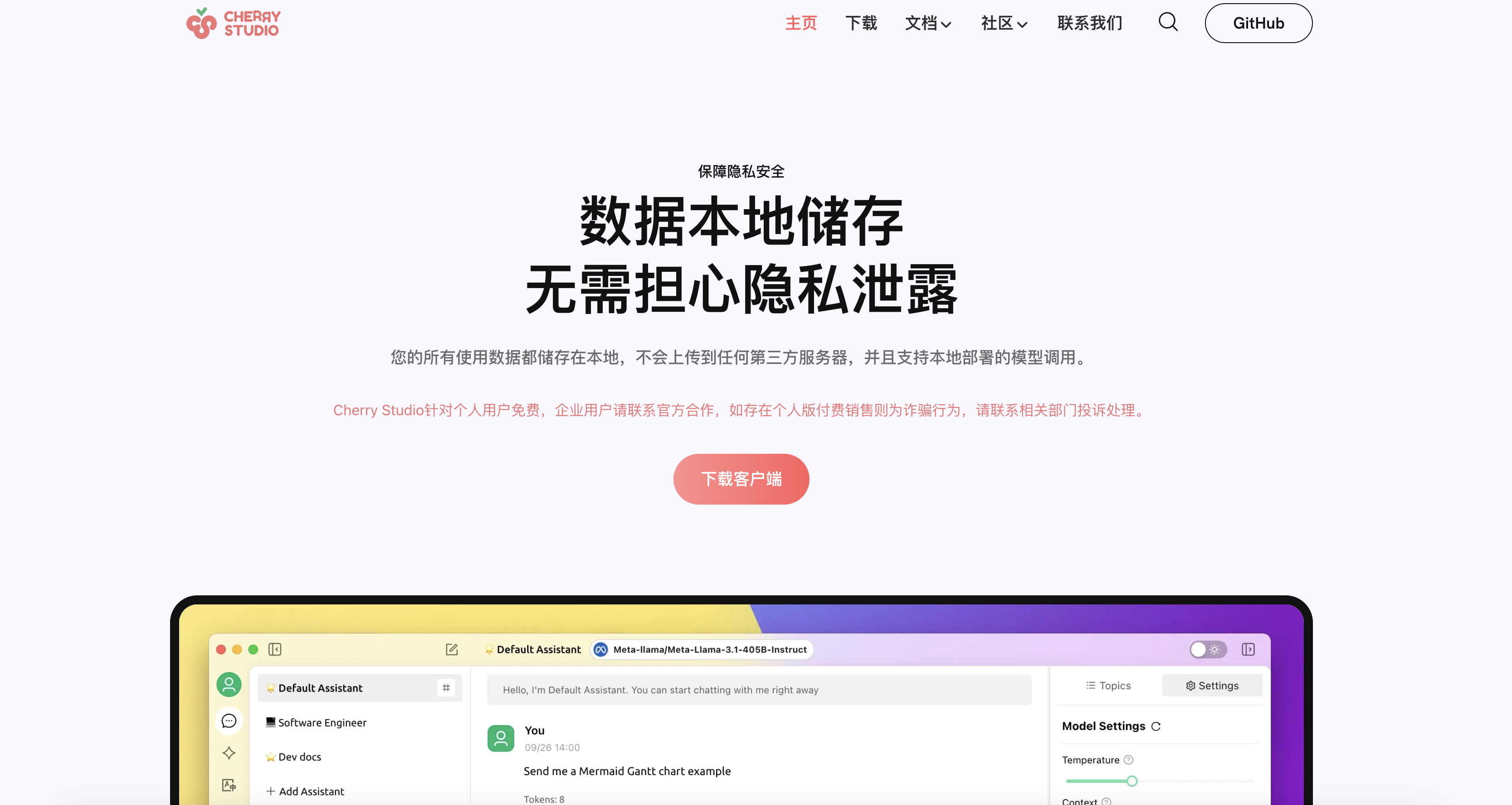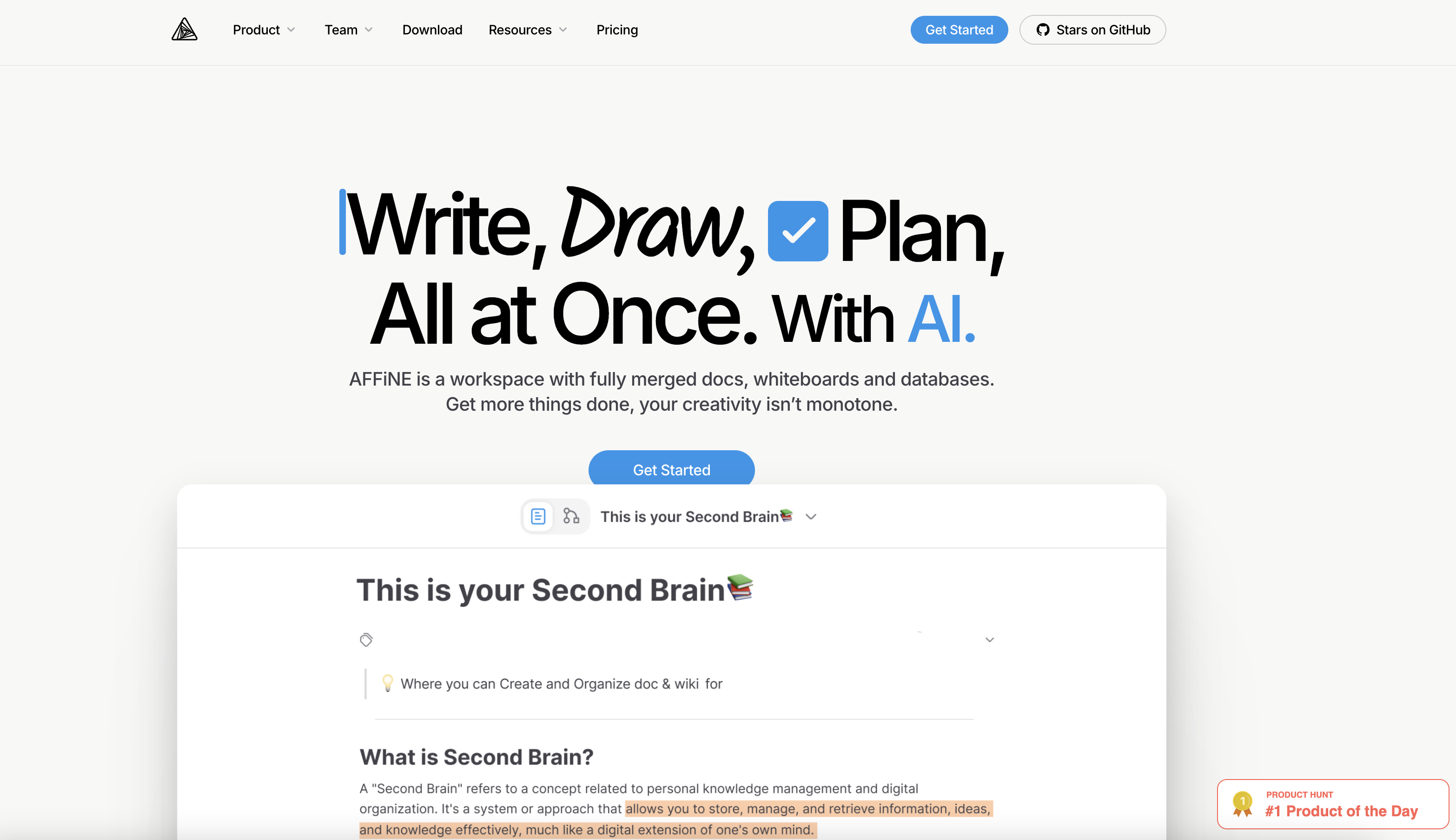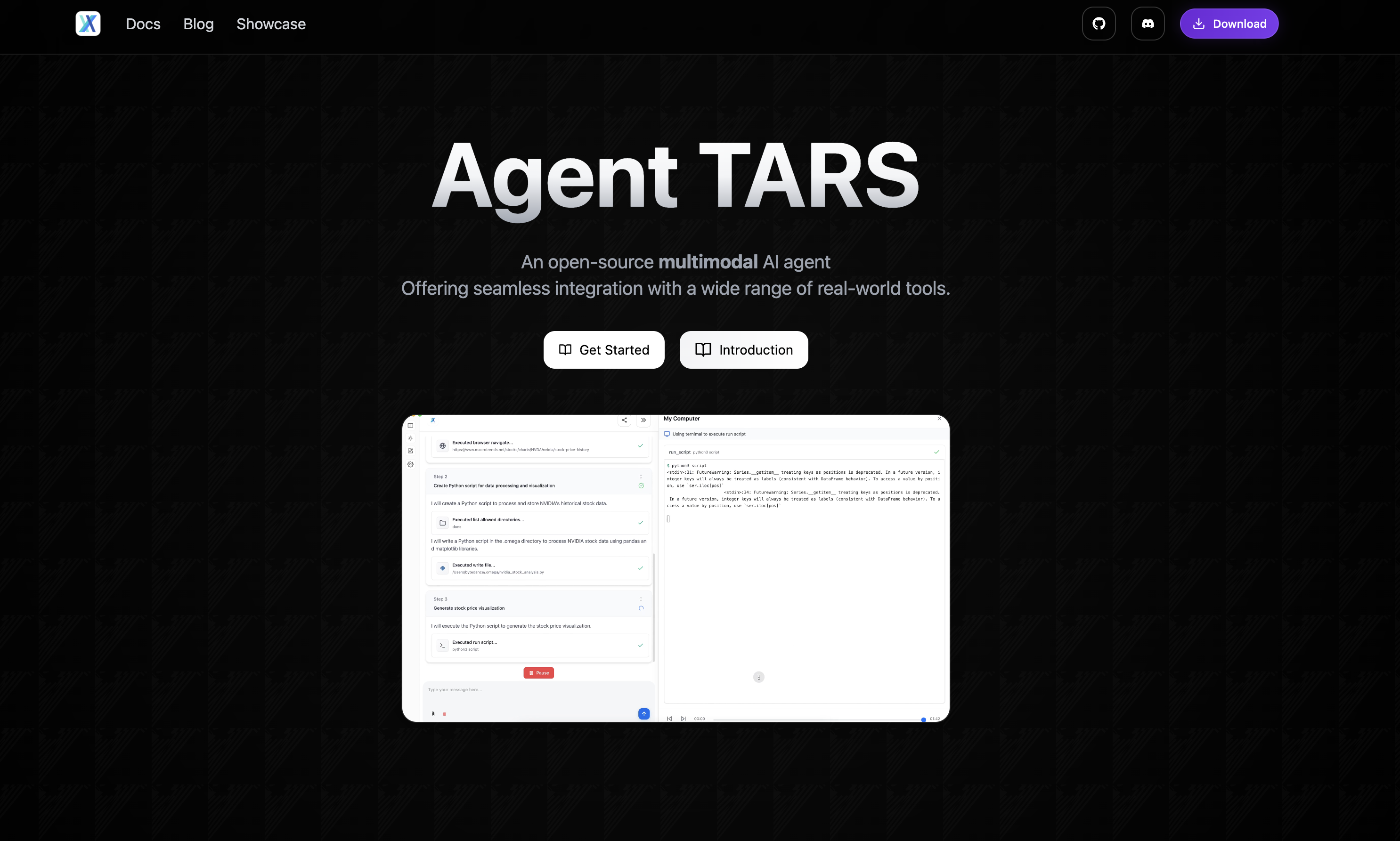Back to leaderboards
AI General Assistant
| Rank | Agent | Category | Rating | Provider | Action |
|---|---|---|---|---|---|
| 1 |  Flowith A next-generation AI productivity tool with a two-dimensional canvas interface. Flowith enables multi-threaded, non-linear interaction with multiple AI agents and models in one workspace, aiming to help users achieve a “flow state” for deep work.
## Use Case
Complex, multi-step problem solving and knowledge work. Flowith is used for research, brainstorming, learning, or any task where you might want to engage multiple lines of thought. For example, one can use it to gather and organize information (with an AI helping to fetch and summarize content), while another agent writes code or analyzes data – all concurrently on a canvas. It’s like an AI-powered sandbox for projects that involve text, code, and notes together.
## Feature
* Canvas UI: Instead of a single chat, you have an infinite canvas where you can spawn multiple chat nodes. This visual layout lets you run parallel conversations or workflows (e.g. one agent writing an essay outline while another debugs code) , and you can see and connect different threads.
* Oracle Mode (Agent): A powerful autonomous agent, “Flowith Oracle,” can plan and execute multi-step tasks automatically
* It does task decomposition, uses tools, self-optimizes, and presents a reasoning chain, much like AutoGPT but more stable. You can give it a complex goal and watch it break it down and solve sub-tasks one by one.
* Knowledge Garden: An integrated knowledge base that users can build. It ingests your files, notes, and URLs, breaks them into “Seeds” of info, and connects them. The AI uses this to give context-aware answers using your data. This is essentially a personal Second Brain for contextual retrieval during chats.
* Multi-Model Support: You can utilize different AI models in different nodes (for instance, use GPT-4 in one conversation and another model in a different thread). Flowith can intelligently select the best model for a task or let you run models concurrently (via tool selection, as hinted in product materials).
* Tool Integrations: Supports using external tools (web search, calculators, etc.) within conversations – the Oracle agent has unlimited tool invocation capability , so it can, for example, call APIs or run Python code if set up.
* Non-linear Workflow: Because of its multi-threaded design, you can organize thoughts, to-dos, and outputs spatially. This makes it easier to handle elaborate projects (e.g. writing a research paper with sections in different nodes, or managing a coding project with separate agents for different functions). | digital-worker | 4.9 | Flowith | Explore |
| 2 |  Cherry Studio CherryStudio is an all-in-one AI assistant platform (desktop application) that consolidates multiple AI services into one seamless experience. It supports multi-model dialogue (various LLMs), has a built-in knowledge base, offers AI art generation, translation tools, and more – all with a customizable, user-friendly interface. Think of CherryStudio as a Swiss army knife for AI tasks: whether you want to chat with GPT-4, generate an image, ask a specialized domain expert, or translate a document, it can do it within one unified environment.
## Use Case
Aimed at both professional and personal use, CherryStudio shines in scenarios where users need a versatile AI toolkit. For example, researchers and students use it to manage and query large knowledge bases (ask questions against PDFs or notes), writers use its multiple models to get diverse creative ideas, developers leverage code assistants, and business users might use industry-specific chatbots for analysis. Its applicable scenarios include knowledge management and Q&A, multi-model content creation, translation and office productivity, and creative design through AI art . In practice, a user could have CherryStudio open as a daily assistant: one moment using a finance bot to summarize market data, next generating an image for a presentation, then translating that report into another language – all without switching apps
## Features
Multi-Model Dialogue: CherryStudio allows querying multiple AI models simultaneously. You can pose a question and get answers from, say, GPT-4, Anthropic Claude, and other models side-by-side. This one-question-multiple-answers feature helps compare model outputs and find the best result. It also supports chatting with models from different providers in separate tabs or even concurrently in one session.
Assistant Marketplace: It includes a marketplace of pre-built AI assistants (over a thousand as of 2024) covering domains like translation, programming, writing, education, etc.. These are like persona or task-specific bots (for example, a “Travel Planner” assistant or a “Java Debugger” assistant) that come with preset prompts and configurations. Users can also create and share their own custom assistants.
Integrated AI Utilities: CherryStudio goes beyond chat – it has built-in AI art generation with a dedicated drawing panel for text-to-image creation
. It also provides translation tools, including on-the-fly translation in conversations and a special translation panel for documents. There’s support for summarization and explanation of long text as quick actions (select text and summarize, etc.)
. In short, it combines many AI use-cases (image gen, translation, Q&A) in one app.
File and Knowledge Management: Users can upload files or whole folders into CherryStudio and build a local knowledge base. The system will index documents (PDFs, Word, etc.) and allow AI queries over them
. It also keeps a unified history of all chats and generated content. Features like global search let you quickly find anything said or any info stored across all your assistants and files .This is great for research and retrieving past answers or data.
Support for Multiple AI Providers: CherryStudio can connect to many AI model APIs – OpenAI, Azure, Anthropic, Baidu Wenxin, etc. – as well as run local models on your hardware . It provides a unified interface to all these providers, with features like rotating API keys to avoid rate limits
and automatic model list retrieval. Essentially, it’s model-agnostic: you can plug in your API keys from various services and use them all in one place.
Highly Customizable UI: The platform is built with user customization in mind. It supports custom themes and CSS, different chat layout styles (message bubbles vs. chat list), Markdown rendering (with math formulas, code highlighting, etc.), and exporting chats to Markdown/PDF for sharing
. Users can tailor the interface to their preference, even creating or installing themes (a community has made themes like “Aero” and “PaperMaterial”).
Cross-Platform & Extensible: CherryStudio runs on Windows, macOS, and Linux with a simple installation (no complex setup) . It’s also open-source and extensible: advanced users can develop plugins or even contribute to its code. Planned features (according to the roadmap) include JavaScript plugin support and a browser extension for quick AI actions on webpages , as well as mobile apps in the future
. This roadmap indicates a commitment to broadening its ecosystem.
## Maturity
Active Open-Source Project. CherryStudio emerged in 2023 and has been under continuous development. While already quite feature-rich, it is still approaching its first full version release (an official v1.0 is noted as a TODO) The project is very active – updates are frequent (the documentation is updated regularly, and the developers are responsive to issues). Because it’s open-source, power users often contribute improvements. In terms of stability, it’s generally stable for daily use, though as an evolving desktop app, occasional minor bugs can occur. Overall, it’s at a late-beta/near-mature stage: widely used by thousands of users, but still rapidly adding new features and polish.
## Popularity
CherryStudio has a strong following, especially among AI enthusiasts and developers in Asia. It has garnered over 22,000 stars on GitHub
– a testament to its popularity as an open-source project. This high star count places it among the top community AI tools. It also maintains active user communities on Telegram, Discord, QQ, and other platforms for support and feedback. Many users gravitate to CherryStudio because it consolidates what would otherwise require several different AI apps or browser tools; this convenience and its open nature have driven adoption. It’s frequently recommended in AI forums as a go-to app for those who want more control over their AI experience (like using custom models or keeping data local). While not as publicized in mainstream media, within its niche CherryStudio enjoys a reputable status and growing global user base through word of mouth.
Cost: Free and Open-Source. CherryStudio is released under an open-source license (MIT/Apache) and is free to download and use. There is no paid tier for the software itself; the developers make it available to everyone. Users might incur costs from the third-party AI APIs they connect (for example, you still pay OpenAI for API calls if you use your OpenAI key), but CherryStudio doesn’t charge anything on top. The project sustains itself through community support (users can sponsor the project on GitHub or similar). For companies or advanced users, the source code being open means it can even be self-hosted or customized internally at no cost. The free cost is a major attraction, especially compared to commercial AI agent platforms. | productivity | 4.7 | 上海千彗科技 | Explore |
| 3 |  AFFiNE Open-source all-in-one KnowledgeOS (knowledge management system) that blends documents, whiteboards (infinite canvas), and databases, with a built-in AI assistant. AFFiNE’s motto is “Write, Draw, Plan, All at Once, with AI” – it lets you create content and organize knowledge freely, while an “AFFiNE AI” copilot helps generate and structure content
## Use Case
Note-taking, knowledge management, and project planning with AI augmentation. Teams and individuals use AFFiNE as a replacement for tools like Notion, Miro, and Trello combined. You can take meeting notes or requirements documents and have the AI summarize or refine them, brainstorm on a canvas with AI generating ideas or images, and manage tasks or data tables with AI assistance. It’s useful whenever you need to organize thoughts or present information and want AI to help with generation or formatting.
## Feature
* Unified Workspace: Fully merged document editor + infinite whiteboard + spreadsheet/database in one app. You can write rich text, sketch diagrams, and track structured data without switching tools – all data types interlinkable.
* AI Writing Assistant: AFFiNE AI can generate and improve text content. For instance, it can expand a few bullet points into a detailed article or blog post, or rewrite text in a different tone and fix grammar. This helps users create polished docs faster.
* AI Visualization & Planning: The AI helps turn outlines into visual presentations automatically (it can generate slide decks from an outline – currently in beta) . It can also summarize a document into a mind map or diagram, giving a structured visual summary. These features tie the AI to the whiteboard aspect (Canvas AI).
* Task Management & DB with AI: AFFiNE has table/database views for things like Kanban boards or task lists. The AI can assist by auto-sorting, tagging, or prioritizing items (features like auto-tagging are coming soon). It can also answer questions about your tables/data or generate analytics summaries.
* Real-time Collaboration: Multiple users can collaborate on the same AFFiNE workspace. Changes sync in real-time (like Google Docs/Sheets). The AI can operate in a collaborative manner too – e.g., a team brainstorming session on the canvas can involve the AI suggesting ideas live. All data is local-first (for privacy) with cloud sync as optional .
* Templates & Extensibility: Comes with ready-to-use templates (planners, storyboards, note formats, etc.) to jumpstart projects. Being open-source, it’s extensible – the community can add plugins or custom integrations (and AFFiNE builds in public with community feedback). | productivity | 4.8 | AFFiNE | Explore |
| 4 |  5ire Open-source, cross-platform desktop AI assistant and MCP client. 5ire provides a user-friendly chat interface to a variety of AI models (local and cloud) and allows tool use via the Model Context Protocol – all running on your own machine. It’s like having a customizable ChatGPT that can plug into your files and apps.
## Use Case
Acts as a personal AI agent for both coding and general purposes. For example, a developer can use 5ire to load their project and ask the AI to read files, generate code, or debug errors (since 5ire can use tools to access the filesystem). Non-developers might use it to analyze documents or automate workflows (through plugins). It’s essentially an extensible AI assistant you control locally, suitable for anyone who wants advanced AI capabilities (coding help, data analysis, etc.) without relying on a cloud service’s interface.
## Feature
* Multi-Model Hub: Connects to many AI providers out-of-the-box – OpenAI (GPT-4, GPT-3.5), Anthropic (Claude), Google PaLM, Baidu, local models via Ollama, etc.
* You can choose or switch models for different tasks and even run open-source models on your machine.
* Tool Use via MCP: Supports Model Context Protocol, a standard for tool plugins. 5ire comes with the ability to use tools like file system access (read/write local files), get system info, query databases or APIs, etc., through MCP servers
* There’s an open marketplace of community-made MCP plugins, so your AI can be extended to do web browsing, execute code, and more – similar to ChatGPT Plugins but completely under your control.
* Local Knowledge Base: Built-in support for ingesting documents (PDF, DOCX, CSV, etc.) and creating embeddings locally using a multilingual model. This lets you do Retrieval-Augmented Generation on your own data without sending it to the cloud – you can ask questions about your files and 5ire will answer using that content.
* Conversation Management: You can bookmark important conversations and search across all past chats by keyword, making it easy to retrieve past insights. Even if you clear the chat, your saved knowledge can persist via bookmarks.
* Usage Analytics: If using paid APIs, 5ire tracks your usage and spend for each provider, so you have transparency on how many tokens/calls you’re using. This helps optimize costs when leveraging multiple models.
* Extensible & Cross-Platform: Works on Windows, Mac (brew cask available), and Linux. It’s open-source (TypeScript), allowing developers to contribute or fork. You can even build custom apps on top of 5ire or integrate it with other systems (the team provides a development guide)
| digital-worker | 4.6 | 5ire | Explore |
| 5 |  Agent TARS Agent TARS is an open-source multimodal agent designed to revolutionize GUI interaction by visually interpreting web pages and seamlessly integrating with command lines and file systems. It is designed for workflow automation, going beyond static chatbots by making its own decisions and evolving over time.
## Use Case
Primarily used for web-based task automation and research assistance, it can orchestrate complex tasks such as deep web research, interactive browsing, information synthesis, and other GUI-driven workflows without continuous human input . This makes it useful for gathering and analyzing information across the web or performing repetitive browser actions on the user’s behalf.
## Feature
* Advanced Browser Operations: Can perform sophisticated multi-step web browsing tasks (e.g. automated deep research, clicking through pages) using visual understanding of pages
* Comprehensive Tool Support: Integrates with various tools – search engines, file editors, shell commands, etc. – enabling it to handle complex workflows that combine internet data with local operations
* Enhanced Desktop App: Provides a rich UI for managing sessions, model settings, dialogue flow visualization, and tracking the agent’s browser/search status
* Workflow Orchestration: Coordinates multiple sub-tools (search, browse, link exploration) to plan and execute tasks end-to-end, then synthesizes results into final outputs
* Developer-Friendly Framework: Easily extensible for developers – it works within the UI-TARS framework, allowing customization and new workflow definitions for agent projects
## Maturity
Technical Preview – Agent TARS is in an early development stage and not yet stable for production use . It was first announced in March 2025 and is evolving rapidly with community contributions.
| digital-worker | 4.9 | Bytedance | Explore |